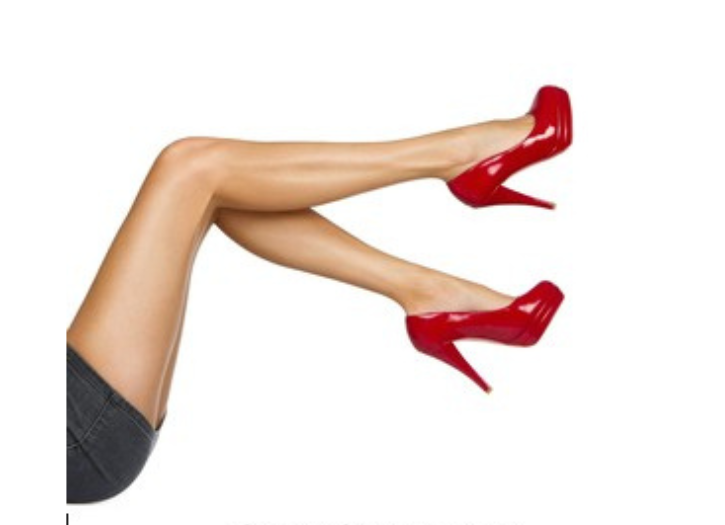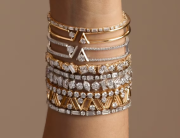High-heeled shoes, are a type of shoe with an upward-angled sole. The heel in such shoes is raised above the ball of the foot. High heels cause the legs to appear longer.
21st century
In the Western world, high-heeled shoes exist in two highly gendered and parallel tracks: highly fashionable and variable women’s shoes with thin long heels, and practical, relatively uniform men’s shoes in a riding boot style, with thick, relatively short heels. Heels are often described as a sex symbol for women, and magazines like Playboy, as well as other media sources that primarily portray women in a sexual way often do so using high heels.
Paul Morris, a psychology researcher at the University of Portsmouth, argues that high heels accentuate “sex-specific aspects of female gait,” artificially increasing a woman’s femininity. Likewise, many see the arching of a woman’s back facilitated by wearing high heels as an imitation of a signal of a woman’s willingness to be courted by a man. Despite the sexual connotations, heels are considered both fashionable and professional dress for women in most cases, the latter especially if accompanied by a pants suit. Some researchers argue that high heels have become part of the female workplace uniform and operate in a much larger and complex set of display rules.
Types
- Angle – “the surface of the base of the heel is straight until reaching the waistline, and it looks like the shape of the Korean letter ¬”
- Annabelle – 7-cm platform heel
- Bar – had jewelry or other decorative aspects; associated with flapper culture.
- Chunky – have a thick heel, frequently paired with platforms
- Continental – 7.5 mm, with the upper part of the chest of the heel spreading towards the center of the shoe.
- Cromwell – based on Oliver Cromwell with heel up to 170 mm (6.5 in).
- Cuban – similar to the continental heel, but not curved, generally medium height. Unlike the setback heel, the Cuban heel slopes away from the back surface of the shoe.
- New Look in 1947 – a slim, elegant heel, newly created by putting steel in the heel. This enabled the heel to be skinny without snapping.
- Pantaloon – “similar to Pantaloon pants: the top lift part of the heel is spread out as it extends to the bottom part of the heel, and the waistline of the heel curves inward naturally.”
- Pinet – straight and skinny
- Platform – having a thicker sole under the ball of the foot, elevating the total height
- Setback – similar to the continental heel, but the surface of the back of the heel is straight, forming a right angle.
- Stacked – usually layers of leather 5 mm thick stacked together and trimmed to match the shape of the heel. These are commonly known as block heels.
- Stiletto – tall, skinny heel—the name taken from a long thin knife— first mentioned in a newspaper in September 1953.
- Wedge – popularized by Salvatore Ferragamo, who introduced this in the Italian market in the late 1930s.
Photo Credit: Shutterstock







Add Comment
You must be logged in to post a comment.